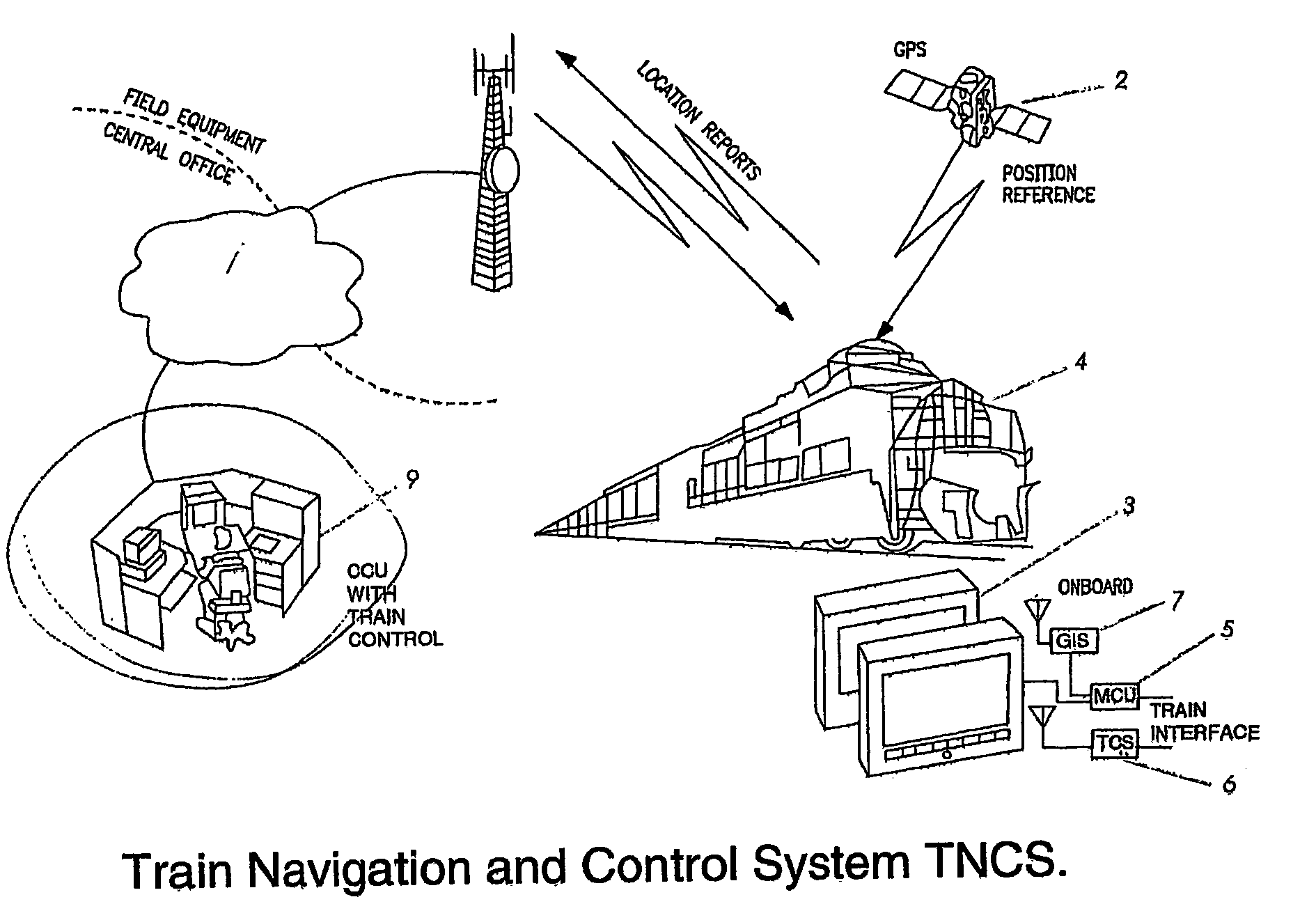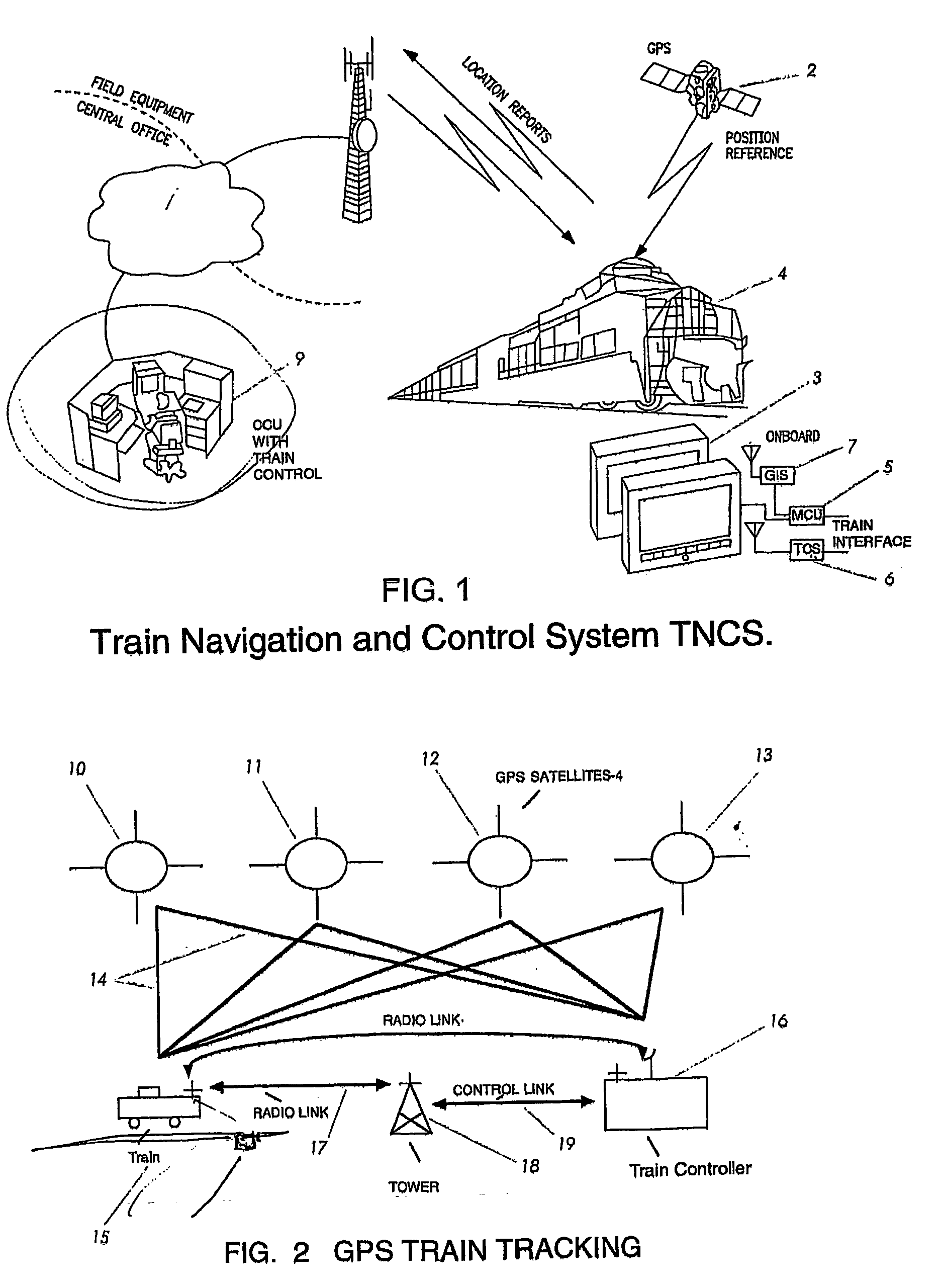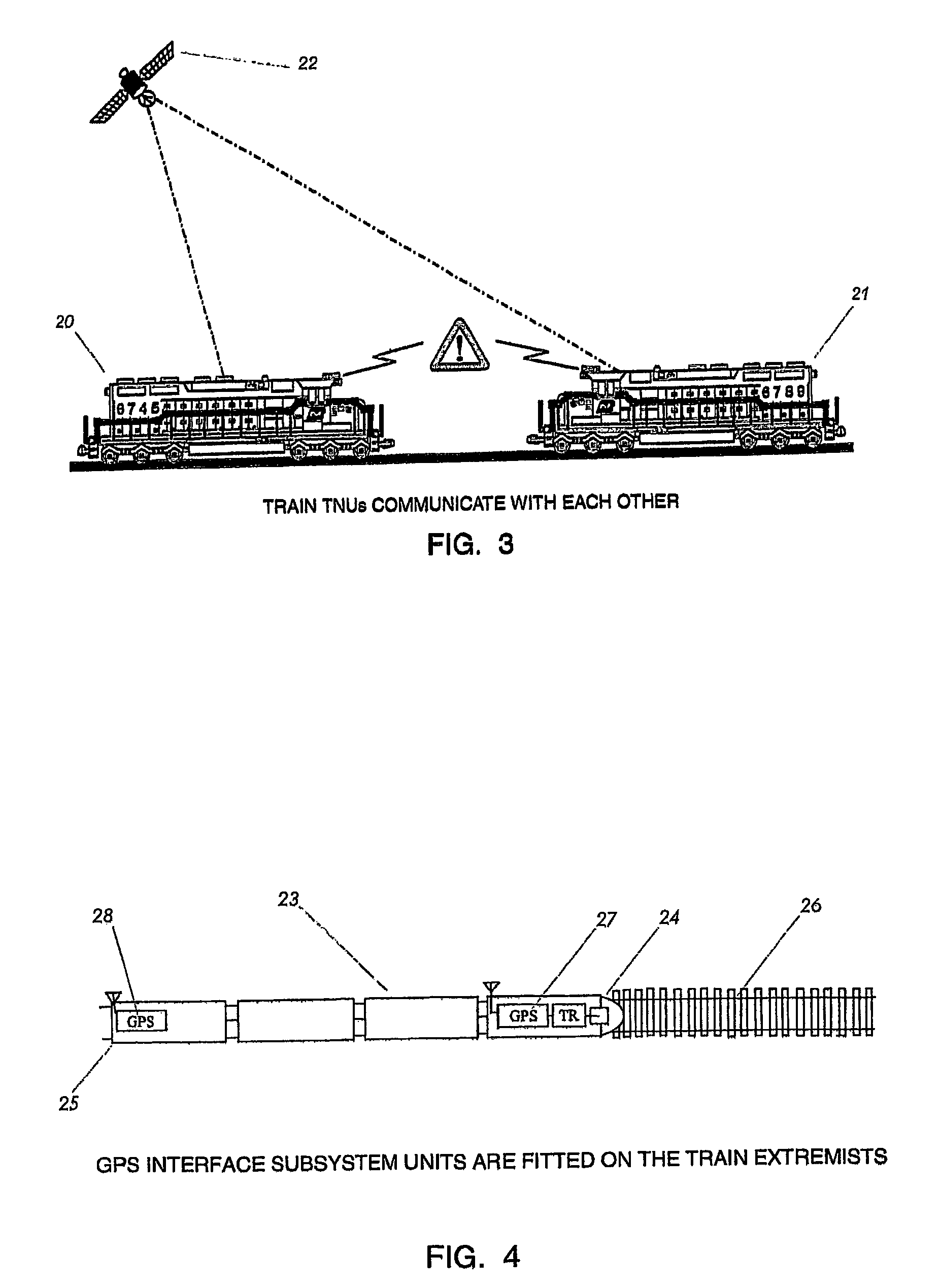Vehicle navigation, collision avoidance and control system
a control system and vehicle navigation technology, applied in the direction of transmission, electrical equipment, railway components, etc., can solve the problems of the main lobe angular width, the angular resolution of the microwave radar, and the difficulty of making a reasonable size microwave radar with beam width less than 3 degrees, so as to improve the accuracy of gps ranging signals and accurately determine one's position. , the effect of improving the accuracy of the gps ranging signal
- Summary
- Abstract
- Description
- Claims
- Application Information
AI Technical Summary
Benefits of technology
Problems solved by technology
Method used
Image
Examples
Embodiment Construction
[0137] The present invention will now be described in more detail with according to a preferred but non limiting embodiment and with reference to the accompanying illustrations wherein;
[0138]FIG. 1 shows a schematic layout of a train navigation and control system (TNCS) according to one embodiment;
[0139]FIG. 2 shows a first communication link being a GPS receiver and a second communication link being a GPS transceiver each operating on separate predetermined frequencies.
[0140]FIG. 3 shows a schematic of typical trains in a network the receiving information from one another on parameters associated with the operation of the other train.
[0141]FIG. 4 shows a plan view of a train and track assembly including a GPS subsystem interface unit fitted to the train.
[0142]FIG. 5 shows a schematic layout of a typical procedure for processing and analyzing inputs and transmitting data derived from those inputs.
[0143]FIG. 6 shows a plan view of a typical track and trains arrangement includin...
PUM
 Login to View More
Login to View More Abstract
Description
Claims
Application Information
 Login to View More
Login to View More - R&D
- Intellectual Property
- Life Sciences
- Materials
- Tech Scout
- Unparalleled Data Quality
- Higher Quality Content
- 60% Fewer Hallucinations
Browse by: Latest US Patents, China's latest patents, Technical Efficacy Thesaurus, Application Domain, Technology Topic, Popular Technical Reports.
© 2025 PatSnap. All rights reserved.Legal|Privacy policy|Modern Slavery Act Transparency Statement|Sitemap|About US| Contact US: help@patsnap.com



